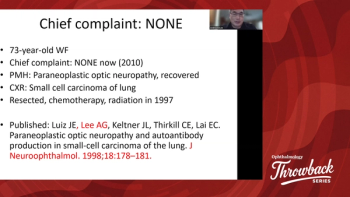
Helping patients navigate telehealth video visits benefits practice
According to the study, attendance improved by 9% and the return on investment totaled $11,387 over a 12-week period.
Telehealth attendance and reimbursement can be improved by having a staff member calling patients a day in advance of scheduled telehealth appointments, according to a study.
According to the study,1 attendance improved by 9% and the return on investment totaled $11,387 over a 12-week period. The research was published in JAMA Network Open to explain the program from April to July 2021 at two academic primary care clinics of Harvard Medical Faculty Physicians at Beth Israel Deaconess Medical Center.
The study found that the dramatic rise in use of telehealth accelerated by COVID-19 created new telehealth-specific challenges as patients and clinicians adapted to technical aspects of video visits.
Moreover, the study found that hiring a patient helper was a cost-effective intervention that boosted telehealth attendance, cut patient no-shows and cancelations, and increased successful video visits over 12 weeks.
“Implementing a Telehealth Patient Navigator may be a high-value proposition for health care systems, as it uniquely benefits patients and clinicians while being cost-effective and yielding a positive net return on investment,” according to the study.
How it worked
As telehealth increased amid the pandemic, there were technical challenges and video visits sometimes needed to become telephone consultations, the study said.
In a pilot program, a patient navigator was hired and trained to call patients a day before video appointments, aiming to improve access to care by reducing technological barriers for those new to the online visits. The navigator, reaching patients with morning and afternoon appointments, covered the steps for patients to connect with their physicians.
Those patients, along with those in a comparator group, all received typical appointment reminders, such as phone calls or text messages, the study said.
There were 4068 patients involved, and outcomes were not known for two of them. The navigator reached 1,035 patients, with 949 of them, or 91.6%, successfully attending their appointments. There were 60 cancelations for a rate of 5.8%, and 26 patients, or 2.5%, missed their appointments.
Among the remaining 3,031 patients in the comparator group, 2,511, or 82.8%, checked in for their visits; 279, or 9.2%, canceled; and 241, or 8%, never showed.
Based on the visitation rate and a $65 per revenue value unit reimbursement, the program covered the quarterly navigator salary of $17,878 and actualized a return on investment of $11,387 over 12 weeks, the study said.
“At our institution, the Telehealth Patient Navigator program proved to be an effective, cost-effective, and high-value intervention associated with improving telehealth visit attendance and fewer patient no-shows and cancellations and increased successful video visits over the course of a 12-week pilot,’ researchers wrote in the study. “Implementing a Telehealth Patient Navigator may be a high-value proposition for health care systems, as it uniquely benefits patients and clinicians while being cost-effective and yielding a positive net return on investment.”
Limitations
The researchers noted patients’ willingness to answer the navigator’s calls could indicate a
As pandemic conditions improve, it is unclear if physicians and patients will
Other limitations include not fully knowing the qualities or qualifications that affect the navigator’s role, and language – the navigator’s outreach is limited to patients who speak the same language, the study said.
Conclusion
In the 3-month pilot, researchers found that a patient navigator was associated with reduced cancellations and no shows, increased video visit uptake, and positive financial value. These efforts may reduce barriers to telehealth and promote equity.
Reference
1. Oren J. Mechanic, MD, MPH, Emma M. Lee, BA, Heidi M. Sheehan, MA, MS; et.al. Evaluation of Telehealth Visit Attendance After Implementation of a Patient Navigator Program. JAMA Network. Published December 8, 2022. doi: 10.1001/jamanetworkopen.2022.45615
Newsletter
Don’t miss out—get Ophthalmology Times updates on the latest clinical advancements and expert interviews, straight to your inbox.


















































.png)


